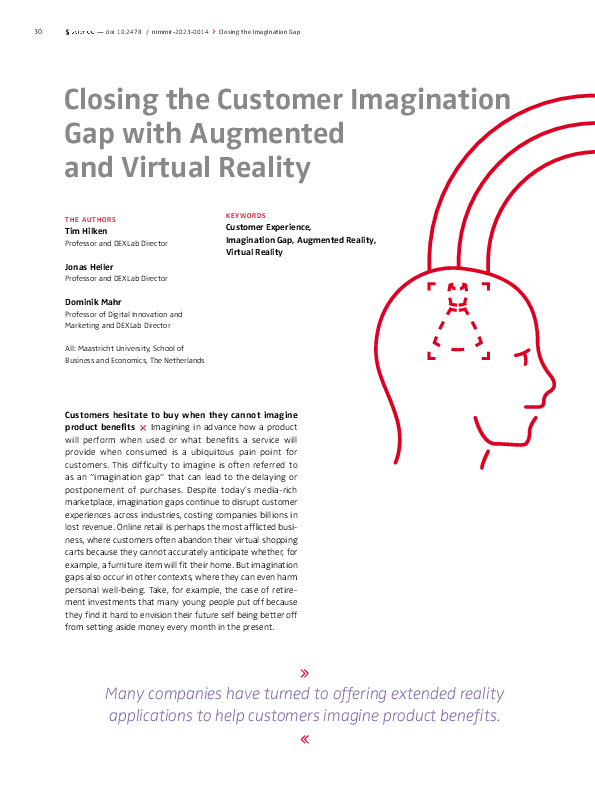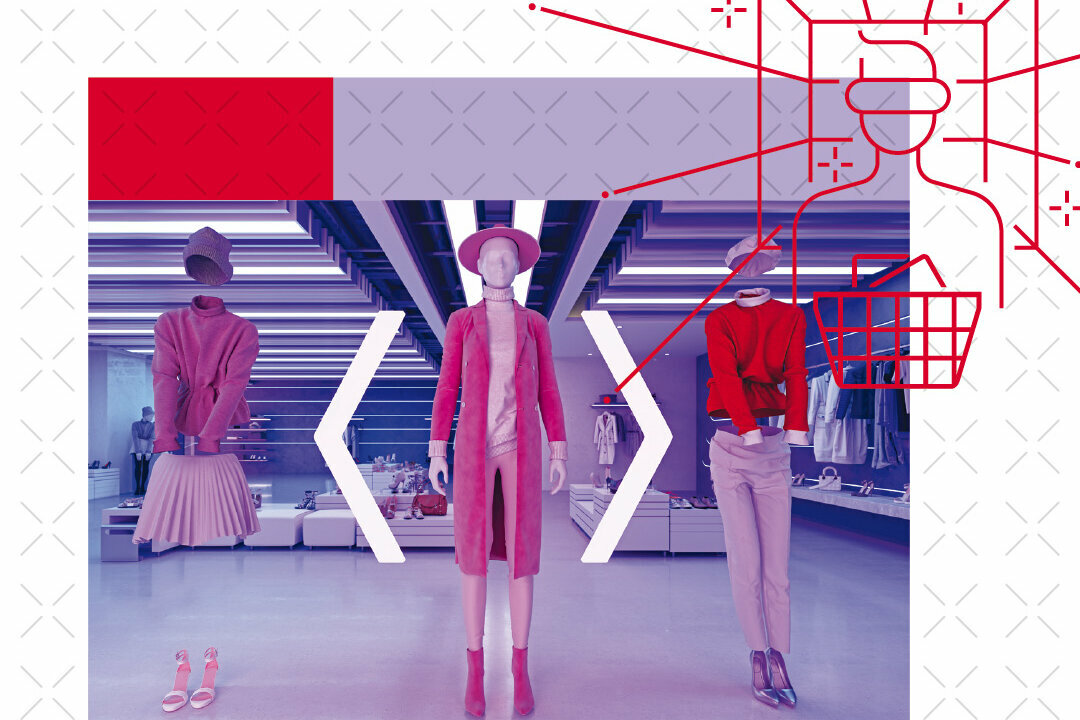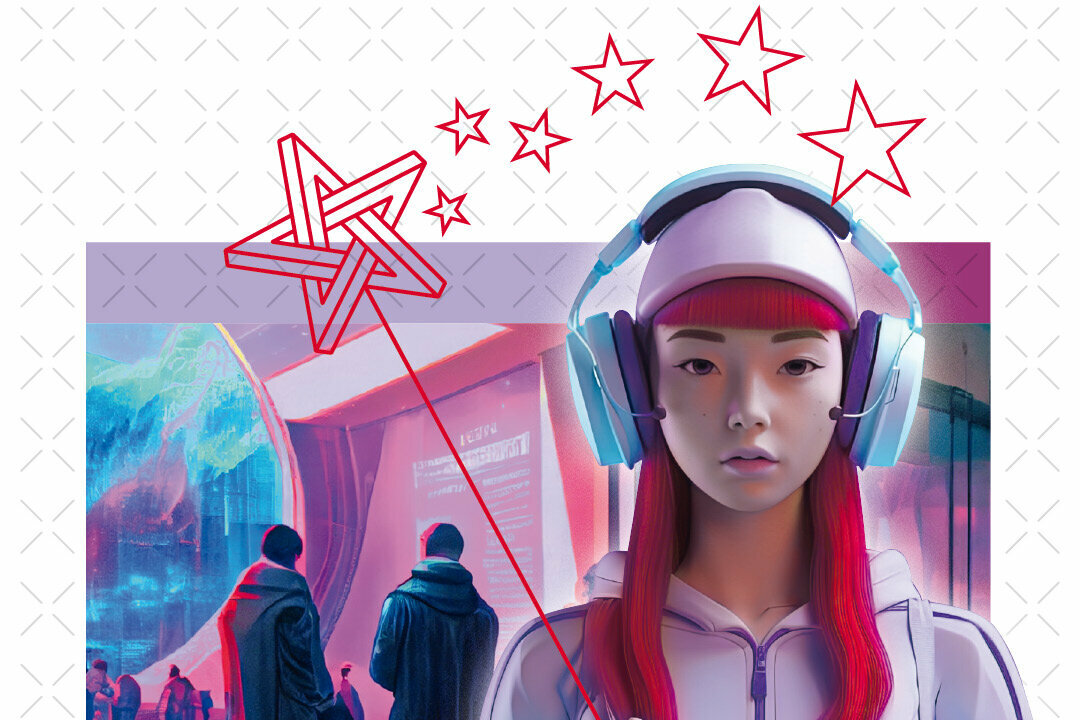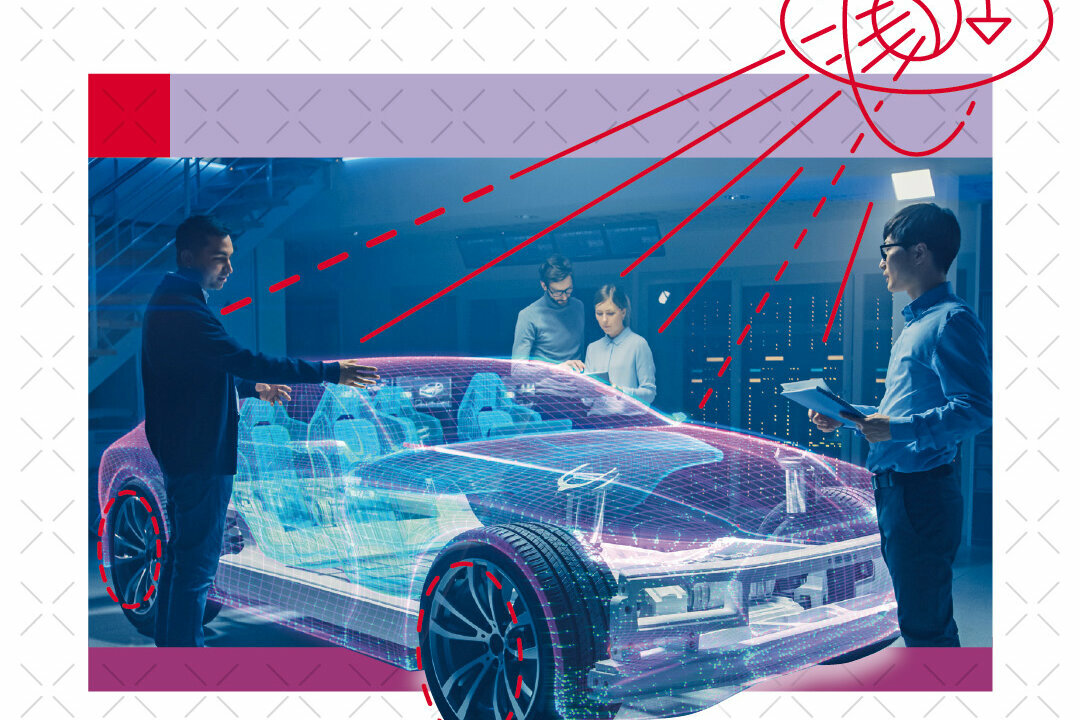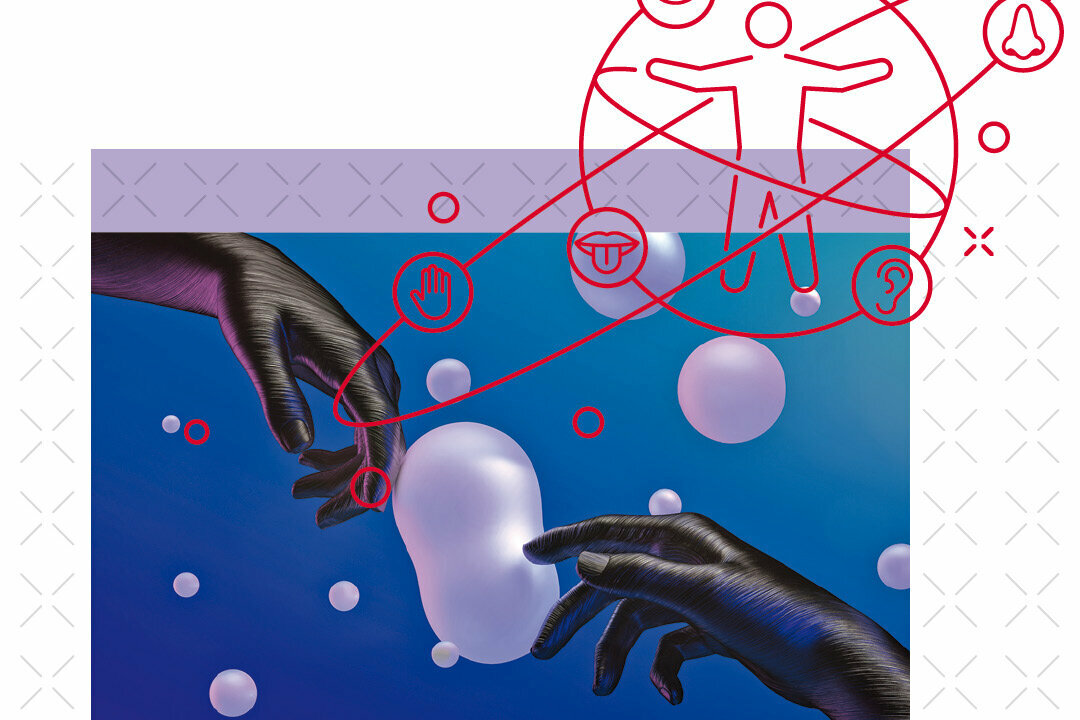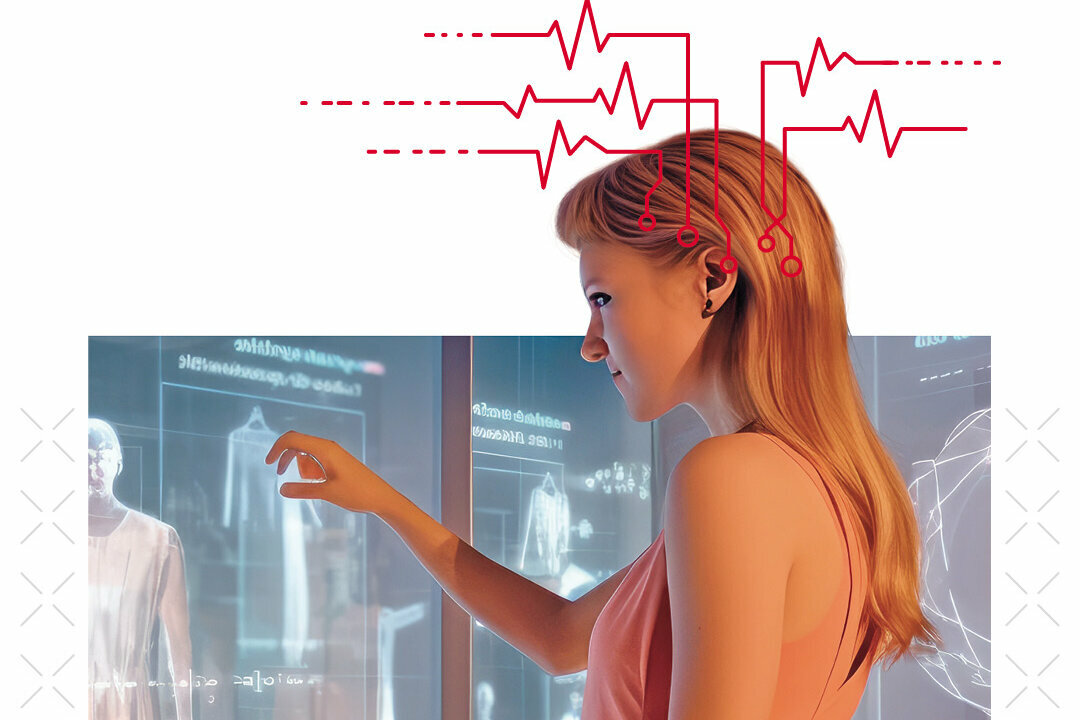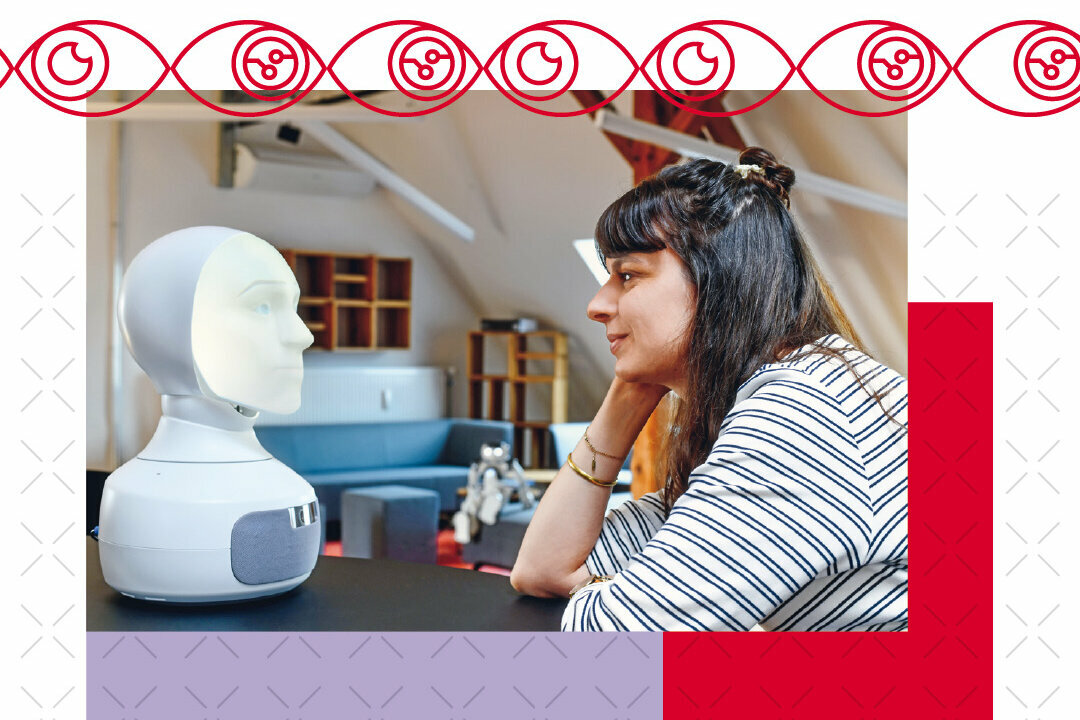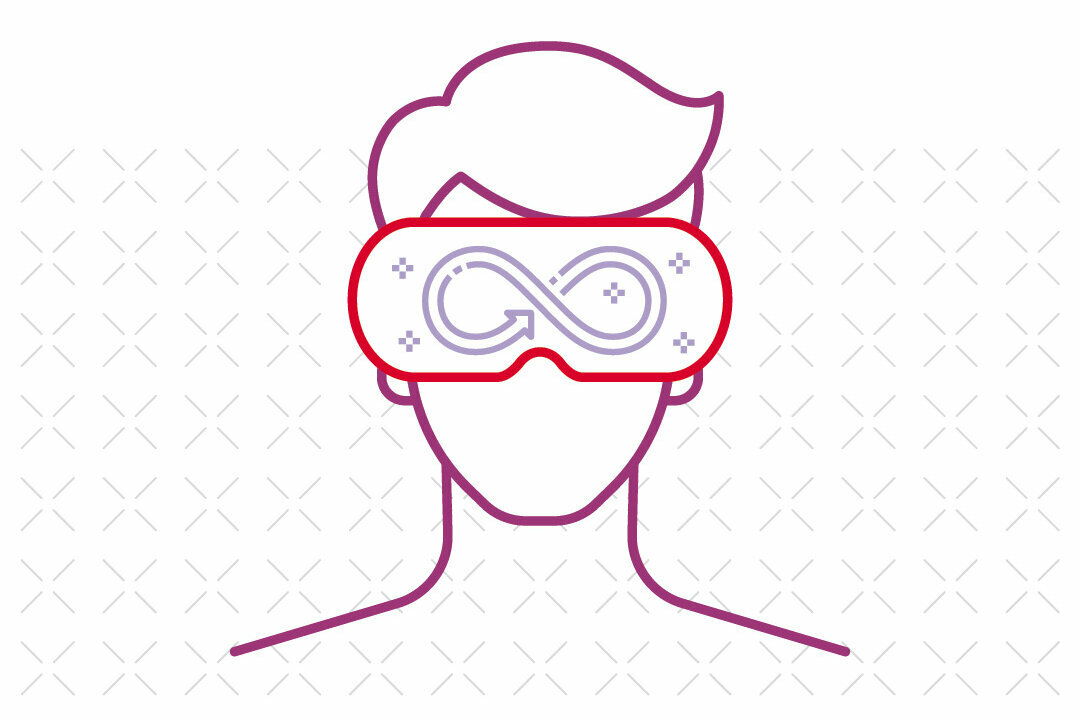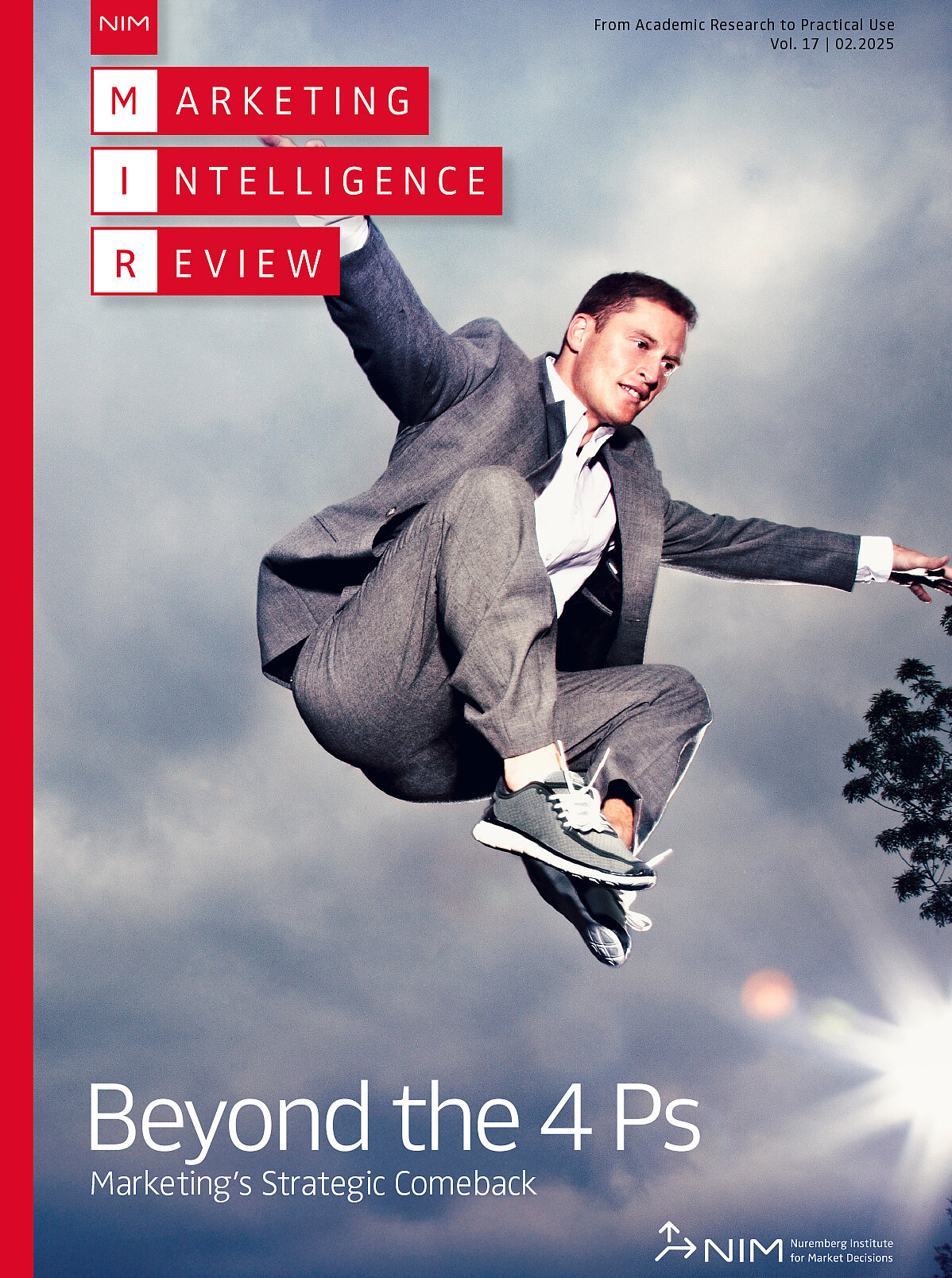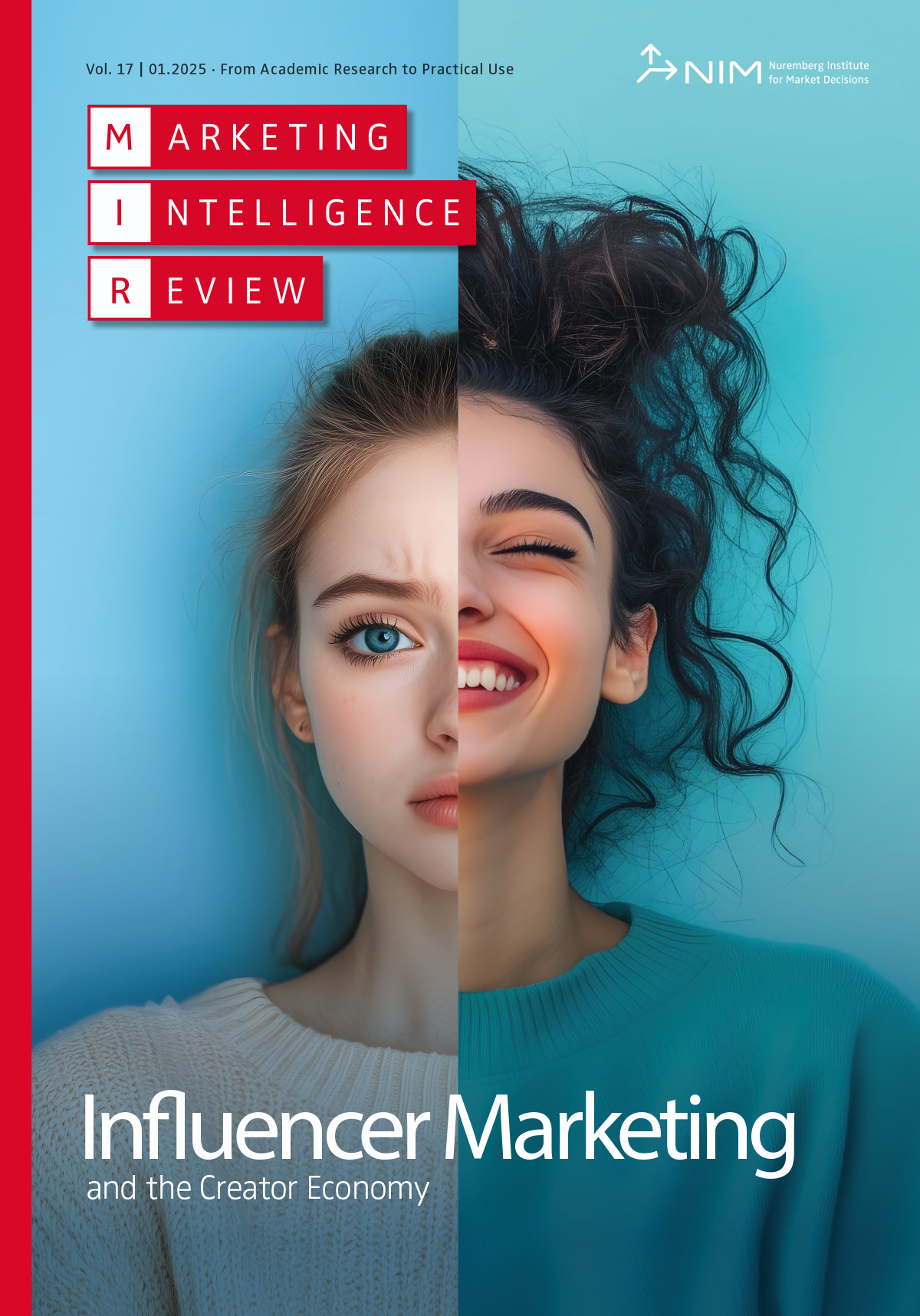Hilken, T., Heller, J., & Mahr, D. (2023). Closing the Customer Imagination Gap with Augmented and Virtual Reality. NIM Marketing Intelligence Review, 15(2) 30-35. https://doi.org/10.2478/nimmir-2023-0014
Closing the Customer Imagination Gap with Augmented and Virtual Reality
Customers hesitate to buy when they cannot imagine product benefits
Imagining in advance how a product will perform when used or what benefits a service will provide when consumed is a ubiquitous pain point for customers. This difficulty to imagine is often referred to as an “imagination gap” that can lead to the delaying or postponement of purchases. Despite today’s media-rich marketplace, imagination gaps continue to disrupt customer experiences across industries, costing companies billions in lost revenue. Online retail is perhaps the most afflicted business, where customers often abandon their virtual shopping carts because they cannot accurately anticipate whether, for example, a furniture item will fit their home. But imagination gaps also occur in other contexts, where they can even harm personal well-being. Take, for example, the case of retirement investments that many young people put off because they find it hard to envision their future self being better off from setting aside money every month in the present.
Many companies have turned to offering extended reality applications to help customers imagine product benefits.
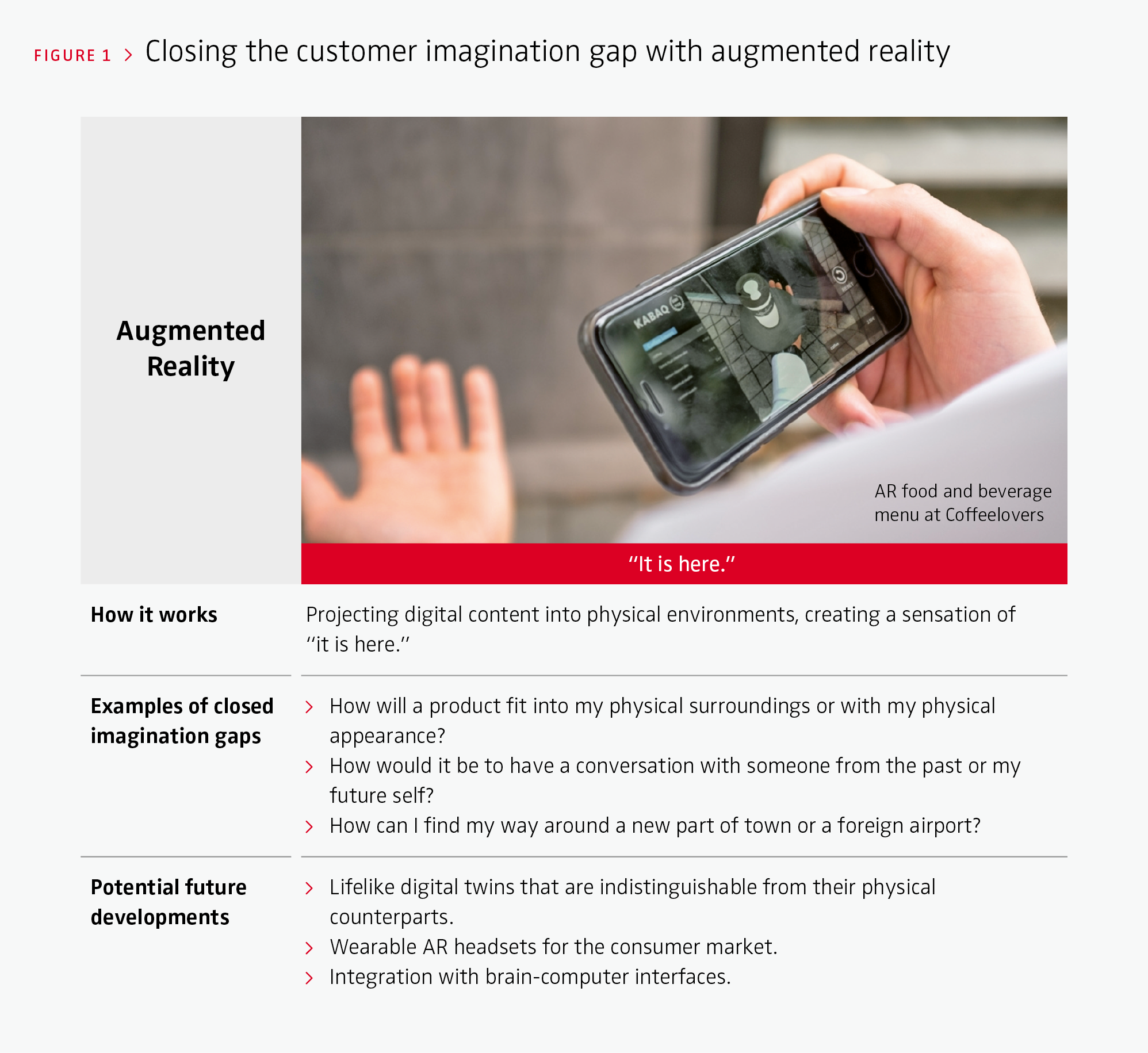
Augmented and virtual reality can close the imagination gap
To help customers bridge these gaps, many companies have turned to extended reality, also referred to as x-reality, including augmented reality (AR) and virtual reality (VR), as well as mixed realities. AR and VR are the main representatives of this new class of technology, and they offer vast opportunities for creating value for businesses and consumers. While AR projects digital content into physical environments and creates a sense of “it is here,” VR transports users into digital environments and gives them an “I am there” sensation. Figures 1 and 2 summarize how AR and VR applications work, provide examples of closed imagination gaps and offer an outlook on future developments.
AR seems more suited for increasing product purchase intentions, whereas VR is more adept at building overall brand attitude.
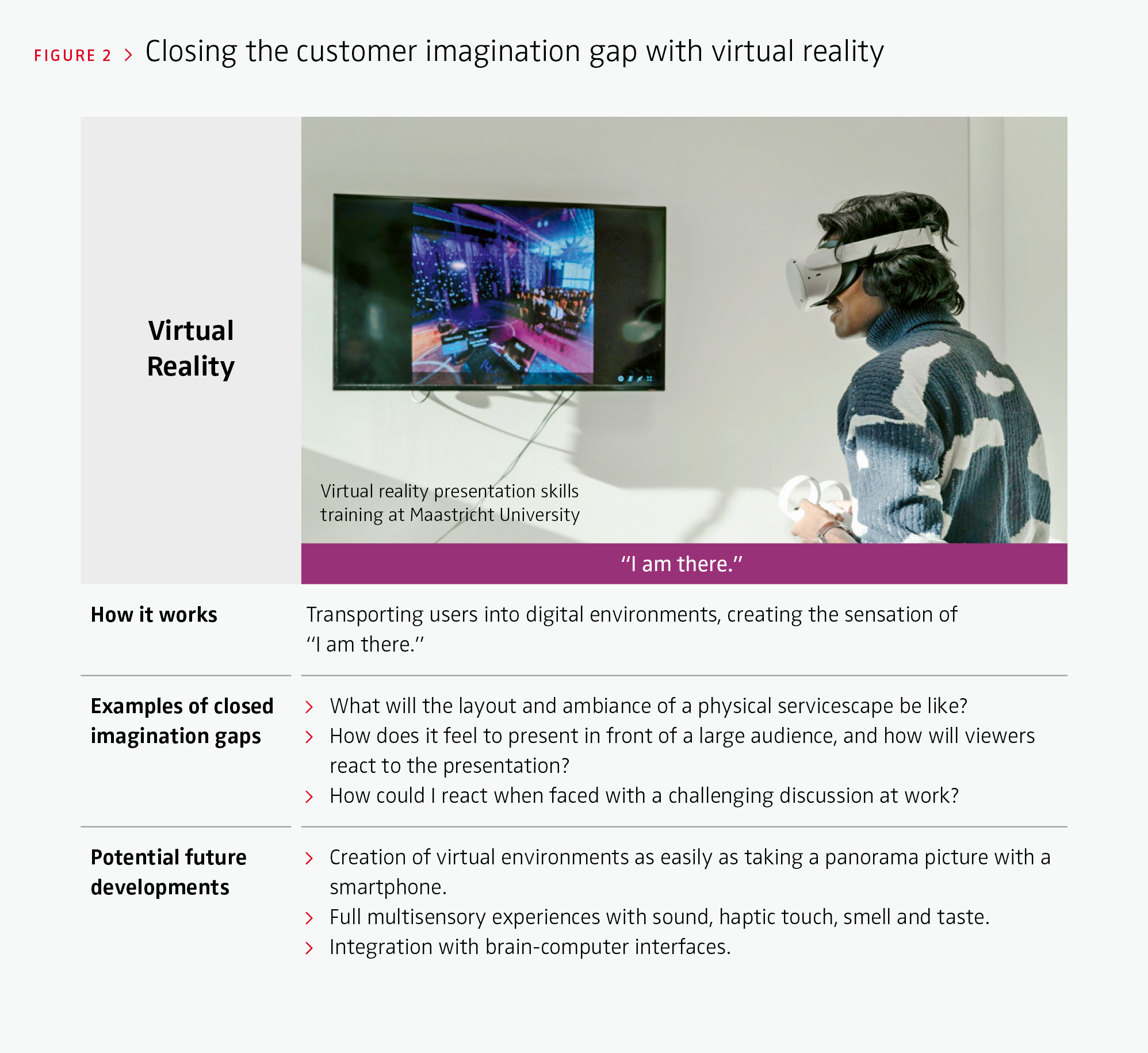
Projecting digital into physical with AR
“Wait a minute, is this for real?” is a common response when customers first use AR to virtually preview products such as furniture at IKEA, Ray-Ban sunglasses, L’Oreal makeup or the food and beverages on the menu at the Dutch café chain Coffeelovers (see Figure 1). AR creates a unique “it is here” experience by making digital content magically appear in the physical environment, in most cases, with the help of a smartphone camera. The failure of Google Glass still casts a long shadow over wearable AR headsets, though Apple’s gradual launch of its Vision Pro might change this in the near future. Nonetheless, current research offers remarkably consistent support for AR’s superiority over traditional media like pictures and videos in closing imagination gaps about products. This gives customers the necessary confidence and comfort to make a purchase. Beyond selling products, AR also helps to close imagination gaps when navigating a complex physical space like London Gatwick Airport or remembering important historical events. For example, in the Illinois Holocaust Museum, visitors can have a conversation with AI-powered AR holograms of Holocaust survivors that will “live on” and tell their story for generations to come, even after the real “Zeitzeugen” have passed away.
Transporting physical into digital with VR
“Is this going to make me feel sick?” was initially a common concern amongst first-time VR users. Fortunately, the days in which customers needed to place their smartphone in a cardboard box to experience VR, only to be overcome by motion sickness, are over. Advanced and affordable headsets like the Oculus Quest series let customers immerse into a different space (and time), giving them a unique sense of “I am there.” In this way, VR opens opportunities for not only improving existing customer experiences but also delivering new value propositions. For example, the Dutch startup Psylaris offers VR experiences aimed at helping patients in mental healthcare to process trauma, resulting in significantly decreased subjective distress. VR is also used to enhance the learning experience in higher education, where students often find it difficult to practice crucial soft skills. At Maastricht University, for example, “practicing in the mirror” is rapidly becoming a thing of the past, as presentation skills training in VR lets students immerse themselves into a lecture hall with a seemingly real audience that reacts to what is presented and how it is presented (see Figure 2).
Research insights and managerial guidelines
Based on the above information, it is not hard to imagine how AR and VR might create value for your business. However, effectively leveraging these technologies requires clear strategizing. In our research, we shed light on important strategic considerations and offer advice to managers along the following guidelines.
> Check the bottom-line impact of using extended realities
In a series of field studies that we conducted at the Dutch café chain Coffeelovers, we document improved sales from using AR food menus, particularly when these are used to sell bundles of food and beverages. When these AR menus were used for in-store promotion, customers were seven times more likely to buy a product bundle; and when they were used for out-of-store promotion, we found them to drive customers to the store, achieving a 26% conversion rate plus an increased likelihood of purchasing a bundle.
> AR or VR? Select the right type of technology for your objectives
There will be situations in which one technology is better suited for achieving a certain marketing objective than the other. In a recent study, we focused on experiential retailing, where companies sell physical products but also leverage the design and atmosphere at the physical point of sale. Here we find some indication that AR seems more suited for increasing product purchase intentions, whereas VR is more adept at building overall brand attitude. We attribute this to different types of imagination that are stimulated by the technologies: product-focused imagination, like specific product attributes, can be better stimulated with AR, whereas VR works better for context-focused imagination, like the ambiance in a store.
It is important to align the deployment of AR and VR with customer needs at specific stages of their purchase journeys.
> Employ AR and VR at different stages along the customer journey
It is important to align the deployment of AR and VR with customer needs at specific stages of their purchase journeys. That is, when moving from awareness and interest to a decision and action, different types of imagination gaps will arise that might be addressed with AR and/or VR. This also offers opportunities for combining both technologies along the customer journey. In the case of online-to-offline journeys, we find benefits in first deploying AR to help customers determine what to buy and then offering VR to support them in imagining the experience of buying and consuming the products when in-store.
> Take customers’ privacy and falsity concerns seriously
In our research, we discovered that customers have developed novel concerns about AR and VR. For example, they are concerned about the new ways in which AR and VR collect potentially sensitive, contextual data, such as how customers decorate their homes with AR or how they move and interact within VR spaces. Furthermore, customers seem particularly worried that AR face filters might create a false sense of reality and associated self-perceptions. Current guidelines for the ethical use of AR and VR are limited, so there is an opportunity for companies to lead by example and take a responsible business approach, such as that taken by Pinterest, which does not permit any skin smoothing in their AR filters to combat body dysmorphia.
Taking it even further: neuro-enhanced reality.
Looking beyond AR and VR, the next frontier technology is already looming on the horizon. Brain-computer interfaces (BCIs) are increasingly integrated with consumer devices such as headphones by Neurable or baseball caps by NextMind that can read brain activity and transform these signals into commands for a digital device. This paves the way for a neuro-enhanced reality (NeR) based on a new way of experiencing AR and VR – namely, without physically controlling a device. For example, during a VR shopping experience, customers can simply think about where to go next or which products should appear. In the longer term, NeR might even eliminate imagination gaps altogether with BCIs that not only read brain activity but actively stimulate brain regions through implants, such as that being developed by Neuralink. Though futuristic, it is possible to imagine everyday use scenarios: when customers use VR to tour a holiday resort before booking, NeR lets them not only see what the hotel or beach looks like but also “smell” or “taste” the food at the restaurant or “feel” the ocean breeze on their skin.
FURTHER READING
Hilken, T., Heller, J., Keeling, D. I., Chylinski, M., Mahr, D., & de Ruyter, K. (2022). Bridging imagination gaps on the path to purchase with augmented reality: Field and experimental evidence. Journal of Interactive Marketing, 57(2), 356–375.
Hilken, T., Chylinski, M., Keeling, D. I., Heller, J., de Ruyter, K., & Mahr, D. (2022). How to strategically choose or combine augmented and virtual reality for improved online experiential retailing. Psychology & Marketing, 39(3), 495–507.
Hilken, T., Chylinski, M., de Ruyter, K., Heller, J., & Keeling, D. I. (2022). Exploring the frontiers in realityenhanced service communication: from augmented and virtual reality to neuro-enhanced reality. Journal of Service Management, 33(4–5), 657–674.
